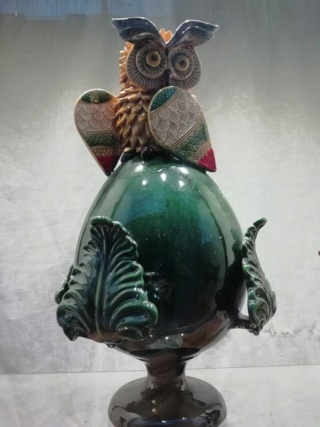So they didn't just kill each other at the Colosseum then! Third Century graffiti, frescoes and symbols suggest there was more to the arena than fighting to the death A restoration of the ancient Colosseum in Rome has revealed previously unseen red, blue and green frescoes, a world away from its famous monochrome facade.
Another discovery of the recent restoration of an internal passageway is a selection of graffiti and drawings of phallic symbols.
Experts believe some of the graffiti may date from the 3rd century, after the Colosseum was restored following a fire in AD 217.

Brightly coloured fragments of frescoes were found during a restoration of a passageway inside the Colosseum

A restorer stands in front a wall with remains of frescoes and graffiti

The findings were part of a long-delayed restoration of Rome's Colosseum
The findings paint an all together more colourful appearance than archeologists had previously thought of the famous 50,000-seat amphitheatre.
The discoveries were announced today, and officials have said the passageway will be open to the public later on this year.
The frescoes were found in a passageway situated between the second and third levels of the Colosseum.
This is the highest level of seating, and is a wooden gallery reserved for the lowest classes and furthest from the action in the arena.
Huge amounts of calcified rock and dirt had hidden the frescoes, which were revealed during a cleaning and restoration project, which began in November.

The ancient graffiti, seen here in red in the background, was another discovery of the restoration

The frescoes were hidden under decades of calcified rock and grime, and were revealed after the surfaces were cleaned

Archaeologist Alessandro Danesi shows brightly coloured fragments of frescoes inside a corridor of the Colosseum
The traces confirm that while the Colosseum today is known as a mix of monochrome gray rock, red brick and moss-covered marble, its interior halls used to be a multitude of colours.
THE COLOSSEUMIt was built between 72 and 80 AD and was originally used for gladiator contests, and re-enacting sea battles.
It was the largest ever built in the Roman Empire, and was built of concrete and stone.
In its heyday it could seat 50,000 spectators on three tiers of seating.
The building ceased to be used for entertainment in the early medieval era.
It was then used for a variety of purposes, including housing and and a Christian shrine.
The exterior of the building is visited by millions of tourists each year.
The team also discovered ancient sketches by spectators who painted crowns and palm trees, symbols of victory celebrating the success of gladiators they supported.
The Latin word 'VIND', referring to victory or revenge, was also found.
'We're used to thinking that during excavations, archaeological surprises are a risk for builders and for the city's development,' said Rome archaeological heritage superintendent Mariarosaria Barbera.
'This is a beautiful archaeological surprise Even in a monument as well known as this one, studied all over the world, there are still new things to discover.'
Colosseum director Rosella Rea said less than one per cent of the painted surfaces of the Colosseum remain.
'The insides, the galleries, all the corridors and transverse hallways were completely coloured. We need to imagine a building with extreme contrasts of colour, this was a surprise.'

A frescoe reading 'vind' was found - it means victory or revenge

The traces confirmed that while the Colosseum today is a fairly monochrome colour, it used to have halls decked in colour
By Paul Milligan
Read more: http://www.dailymail.co.uk/news/article-2264759/Discovery-frescoes-graffiti-phallic-symbols-Colosseum-suggests-arena-colourful-previously-thought.html#ixzz2IPaRyKaK


